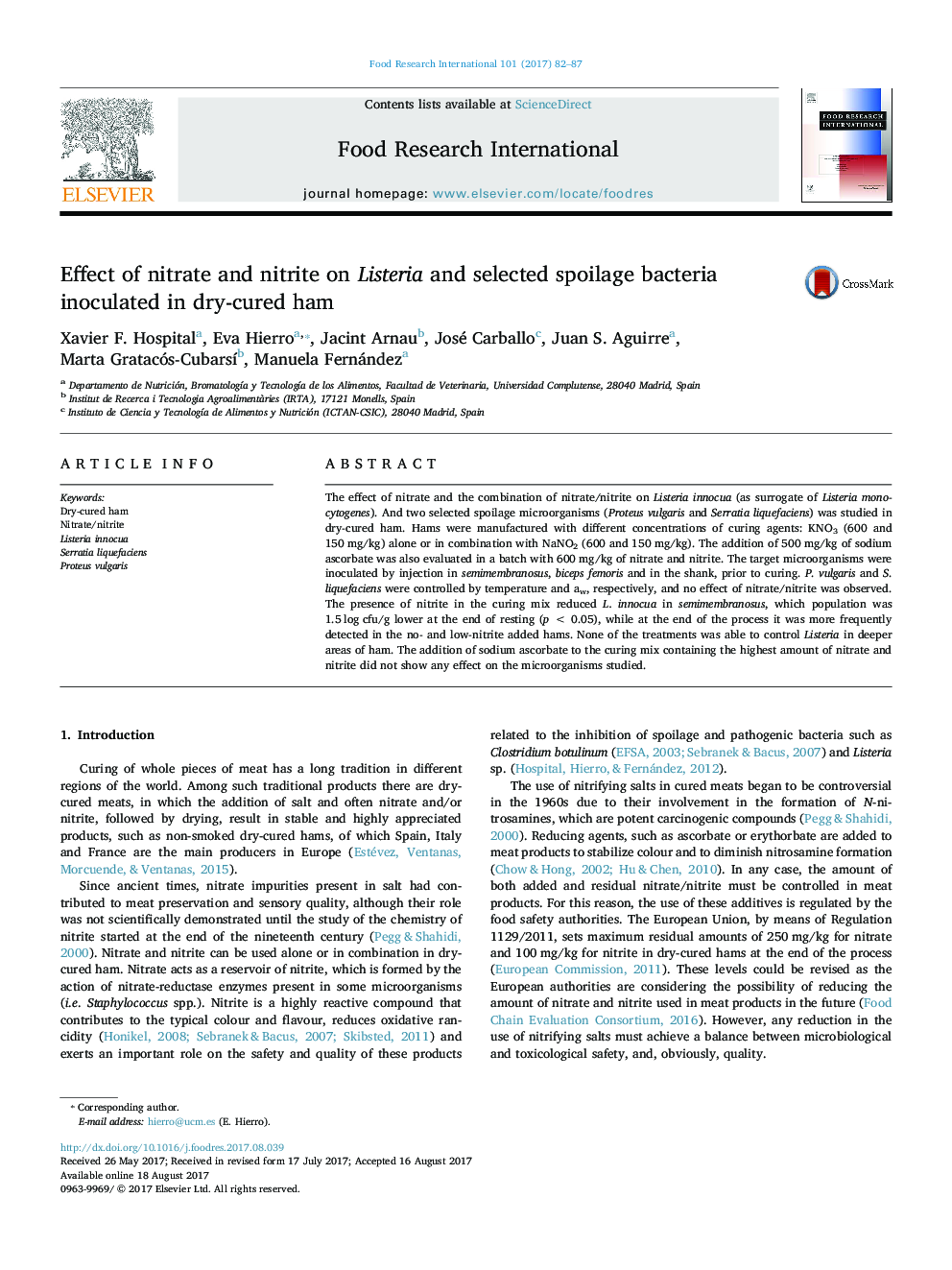| Article ID | Journal | Published Year | Pages | File Type |
|---|---|---|---|---|
| 5767795 | Food Research International | 2017 | 6 Pages |
â¢Nitrate/nitrite was tested for microbial control in inoculated dry-cured hams.â¢No effect of nitrate/nitrite was observed on P. vulgaris and S. liquefaciens.â¢The presence of nitrite in the curing mix reduced L. innocua in semimembranosus.â¢Listeria was more frequently detected in low-nitrite added dry hams.
The effect of nitrate and the combination of nitrate/nitrite on Listeria innocua (as surrogate of Listeria monocytogenes). And two selected spoilage microorganisms (Proteus vulgaris and Serratia liquefaciens) was studied in dry-cured ham. Hams were manufactured with different concentrations of curing agents: KNO3 (600 and 150 mg/kg) alone or in combination with NaNO2 (600 and 150 mg/kg). The addition of 500 mg/kg of sodium ascorbate was also evaluated in a batch with 600 mg/kg of nitrate and nitrite. The target microorganisms were inoculated by injection in semimembranosus, biceps femoris and in the shank, prior to curing. P. vulgaris and S. liquefaciens were controlled by temperature and aw, respectively, and no effect of nitrate/nitrite was observed. The presence of nitrite in the curing mix reduced L. innocua in semimembranosus, which population was 1.5 log cfu/g lower at the end of resting (p < 0.05), while at the end of the process it was more frequently detected in the no- and low-nitrite added hams. None of the treatments was able to control Listeria in deeper areas of ham. The addition of sodium ascorbate to the curing mix containing the highest amount of nitrate and nitrite did not show any effect on the microorganisms studied.
Graphical abstractDownload high-res image (136KB)Download full-size image
